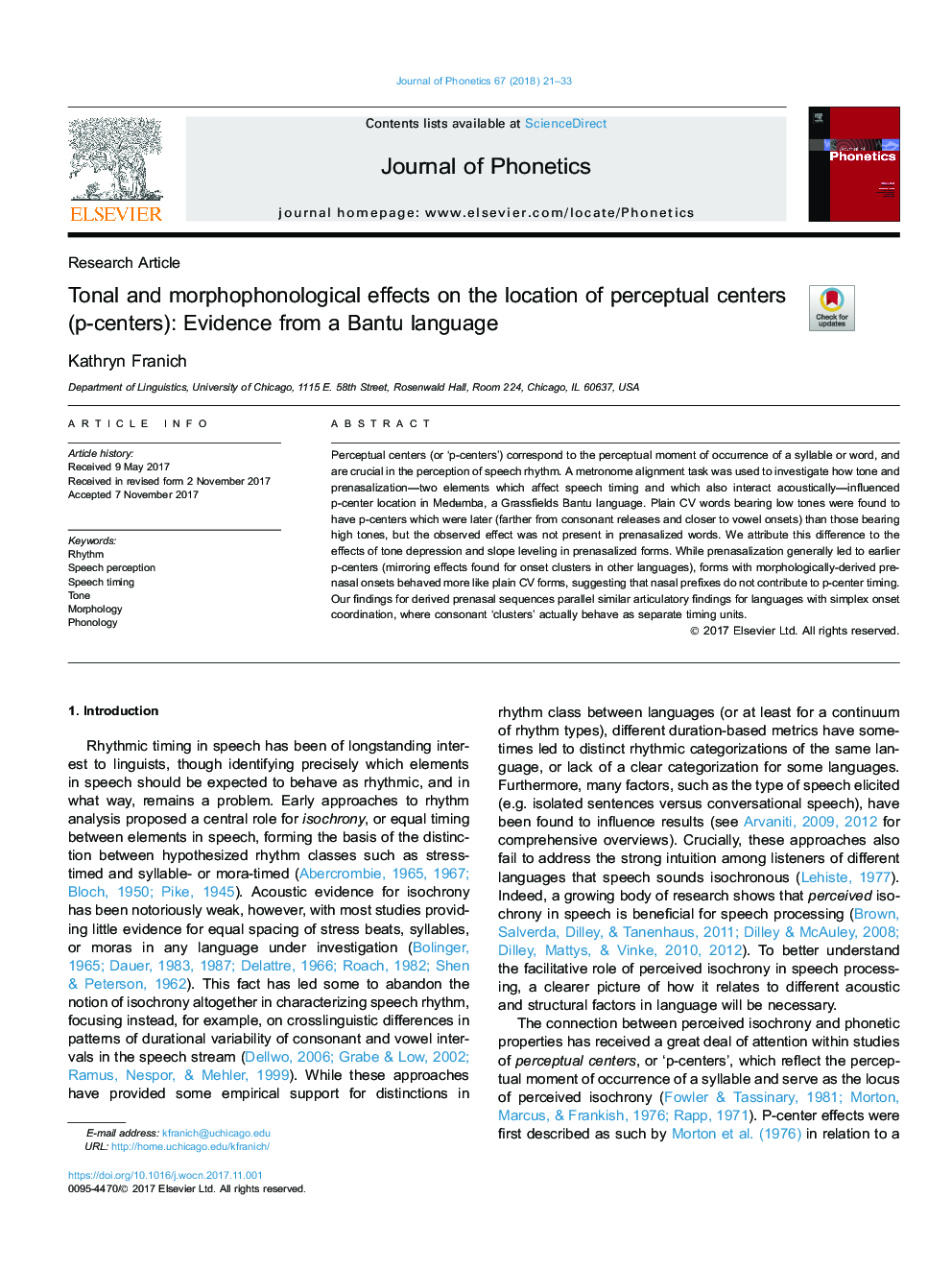| Article ID | Journal | Published Year | Pages | File Type |
|---|---|---|---|---|
| 7532745 | Journal of Phonetics | 2018 | 13 Pages |
Abstract
Perceptual centers (or 'p-centers') correspond to the perceptual moment of occurrence of a syllable or word, and are crucial in the perception of speech rhythm. A metronome alignment task was used to investigate how tone and prenasalization-two elements which affect speech timing and which also interact acoustically-influenced p-center location in MedÊmba, a Grassfields Bantu language. Plain CV words bearing low tones were found to have p-centers which were later (farther from consonant releases and closer to vowel onsets) than those bearing high tones, but the observed effect was not present in prenasalized words. We attribute this difference to the effects of tone depression and slope leveling in prenasalized forms. While prenasalization generally led to earlier p-centers (mirroring effects found for onset clusters in other languages), forms with morphologically-derived prenasal onsets behaved more like plain CV forms, suggesting that nasal prefixes do not contribute to p-center timing. Our findings for derived prenasal sequences parallel similar articulatory findings for languages with simplex onset coordination, where consonant 'clusters' actually behave as separate timing units.
Related Topics
Social Sciences and Humanities
Arts and Humanities
Language and Linguistics
Authors
Kathryn Franich,
